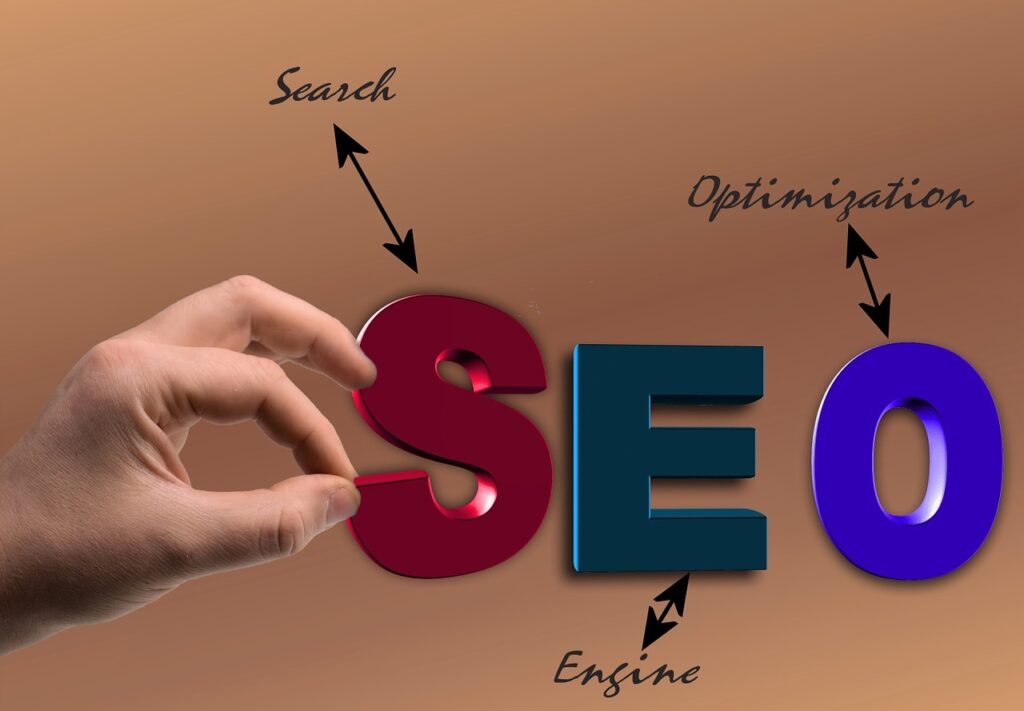Search Engine Optimization (SEO) is the process of optimizing your website to improve its ranking on search engines like Google. SEO is divided into two categories: On-Page and Off-Page SEO. On-Page SEO involves optimizing the elements on your website, while Off-Page SEO involves optimizing external factors that affect your website’s ranking. This beginner’s guide will explore the top On-Page and Off-Page SEO techniques.
On-Page SEO Techniques
Title Tags
Title tags are one of the most important On-Page SEO elements, as they tell both users and search engines what the page is about. They appear as clickable headlines in search engine results pages (SERPs) and should accurately describe the page’s content. Title tags should be between 50-60 characters and include your primary keyword. Using descriptive, keyword-rich titles can help improve your website’s visibility in search engine results.
To optimize your title tags, ensure they accurately describe your page’s content and include your primary keyword. Avoid stuffing your title tags with too many keywords, as this can come across as spammy and hurt your rankings. Additionally, make sure each title tag is unique, as duplicate title tags can confuse search engines and make it harder for them to understand your site’s content.
Meta Descriptions
Meta descriptions are summaries beneath the title tag in search engine results pages (SERPs). They should be between 150-160 characters and include your primary keyword. Meta descriptions don’t directly impact your website’s rankings, but they can impact click-through rates by giving users a preview of what they can expect to find on your page. They can also help search engines better understand the content of your page.
To optimize your meta descriptions, use clear and concise language that accurately describes the content of your page. Ensure to include your primary keyword, as this can help improve your website’s visibility in search engine results. Consider including a call to action or highlighting the unique value proposition of your content to encourage users to click through to your site. Avoid using clickbait or misleading language, which can lead to high bounce rates and hurt your rankings over time.
Headers
Headers, or H1 and H2 tags, are HTML elements used to structure your page’s content. H1 tags should be used for the main title of your page, while H2 tags can be used for subheadings. Headers help search engines understand the structure of your page and can improve readability for users by breaking up large blocks of text into smaller, more easily digestible sections.
To optimize your headers, use descriptive, keyword-rich headers that accurately describe the content of each section. Including your primary keyword in your H1 tag can help signal to search engines what your page is about, while using H2 tags to break up your content into subheadings can make it easier for users to skim your page and find the information they’re looking for. Avoid using too many headers or stuffing them with too many keywords, as this can be spammy and hurt your rankings. Additionally, ensure your headers accurately reflect the content of each section, as misleading or irrelevant headers can hurt your website’s credibility.
Content
Creating high-quality, unique content relevant to your target audience is key to SEO success. Well-written and informative content can help establish your website as a credible source of information and improve your website’s visibility in search engine results pages (SERPs).
To optimize your content for SEO, include your primary and secondary keywords throughout the text in a natural, organic way. Avoid keyword stuffing or using your keywords too frequently, as this can come across as spammy and hurt your rankings. Instead, focus on creating high-quality content that provides value to your target audience. This can include answering common questions or providing in-depth information on a specific topic.
Make sure your content is well-structured and easy to read, with short paragraphs and subheadings to break up large blocks of text. Including images and videos can also help improve the user experience and keep visitors engaged with your content. Finally, make sure your content is unique and not plagiarized from other sources. Duplicate content can hurt your rankings and damage your website’s credibility.
Images
Using images on your website can help improve the user experience and make your content more visually appealing. However, it’s important to optimize your images for SEO as well. One way to do this is by using alt tags.
Alt tags, or alternative text descriptions, are HTML attributes that describe the content of your images. They help search engines understand the content of your images and can improve accessibility for users with visual impairments. To optimize your images for SEO, use descriptive alt tags that accurately describe the content of your images and include your primary and secondary keywords. Avoid using generic or vague alt tags like “image” or “picture,” as these don’t provide much information to search engines or users.
In addition to using alt tags, ensure your images are high-quality and properly compressed for the web. Large images can slow down your website’s load time, hurting your rankings and user experience. Finally, ensure you have the right to use any images on your website, as using copyrighted images without permission can result in legal issues.
Off-Page SEO techniques
Backlinks
Backlinks are links from other websites that point to your website. They are an important Off-Page SEO factor because they signal to search engines that other websites consider your content to be valuable and trustworthy.
There are two types of backlinks: do-follow and no-follow. Do-follow backlinks pass on authority to your website, while no-follow backlinks do not. While both types of links can be valuable, do-follow backlinks are generally more desirable because they can help improve your website’s rankings in search results.
To build high-quality backlinks, start by creating high-quality content that other websites will want to link to. This can include informative blog posts, how-to guides, infographics, and other types of content that provide value to your target audience.
Next, reach out to other websites in your niche and request backlinks. This can be done through email outreach, social media, or by commenting on other blogs with a link back to your website.
Finally, consider guest posting on other websites to build links back to your site. This involves writing an article or blog post for another website in your niche and including a link back to your website within the content. Guest posting can help you build relationships with other website owners in your niche and increase your visibility in search results.
Social Media
Social media can be a powerful tool for improving your website’s visibility and driving more traffic to your site. By building a strong presence on social media platforms, you can build your brand, engage with your audience, and attract new visitors to your website.
To optimize your social media strategy for SEO, start by choosing the social media platforms that are most relevant to your target audience. This may include popular platforms like Facebook, Twitter, and Instagram, or niche platforms that are specific to your industry or niche.
Once you have chosen your platforms, focus on creating and sharing high-quality content that is relevant to your audience. This can include blog posts, images, videos, and other types of content that provide value to your followers.
In addition to creating content, it’s important to engage with your followers on social media. Respond to comments and messages, ask for feedback, and participate in relevant conversations in your industry or niche. By engaging with your followers, you can build relationships and establish yourself as an authority in your field.
Finally, be sure to include links back to your website in your social media profiles and posts. This can help drive traffic back to your site and improve your website’s visibility in search results.
Remember, social media is just one component of your overall SEO strategy, but it can be a powerful tool for building your brand, engaging with your audience, and driving more traffic to your website. Following these tips can optimize your social media strategy and improve your website’s visibility in search results.
Local SEO techniques
Local SEO refers to the process of optimizing your website to rank better in local search results. This is particularly important if you have a physical location or serve a specific geographic area. Here are some tips for optimizing your local SEO:
- Claim and optimize your Google My Business listing: Google My Business is a free tool that allows you to manage your business’s presence on Google, including search and map results. Verify and optimize your listing with accurate information such as your business name, address, phone number, hours, website, and photos.
- Include your address and phone number on your website: Make sure your website includes your business’s complete and accurate address and phone number in text format. This helps search engines understand your location and can improve your chances of appearing in local search results.
- Target keywords that include your location: Consider adding location-specific keywords to your website’s content and metadata, such as your page titles, meta descriptions, and header tags. For example, if you are a dentist in New York City, you might target keywords like “best dentist in NYC” or “New York City dental services.”
By following these tips, you can improve your visibility in local search results and attract more local customers to your business.
Final Words
In conclusion, On-Page and Off-Page SEO techniques are both important for improving your website’s ranking on search engines. By following the tips outlined in this beginner’s guide, you can optimize your website and improve your visibility online. Remember that SEO is an ongoing process, and monitoring and optimizing your website over time to maintain your rankings is essential. Consider working with an SEO professional or joining online communities focused on SEO for additional resources and support.


